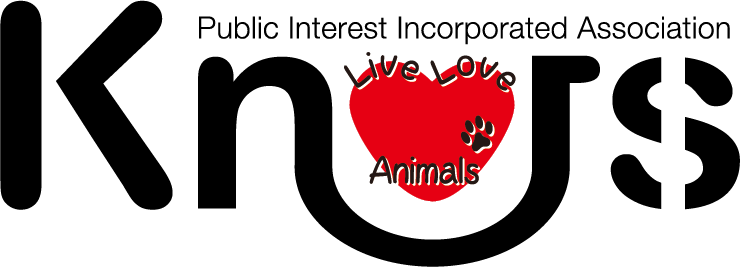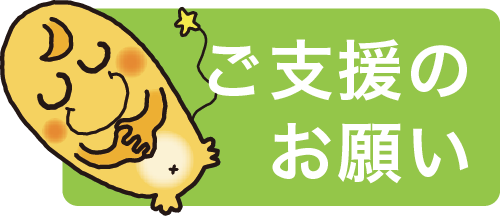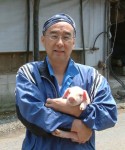|
|
||||||||||||||||
Symposium Ⅷ
“Stock raising Now! Food safety and animal welfare”
Date: Sun.20th July 14:00 ~ 17:00
Venue: Kitano Meeting Room
Organiser: The Japanese Society of Veterinary Science
Purpose: Although achievement of food safety has long been called for in farm animal breeding, the situation where animal welfare must be taken into consideration is now imminent. In this symposium, we will be discussing on whether welfare of farm animals and safety of the animal products are a trade-off (or incompatible) or whether they can have a synergistic relationship, thereby addressing how the farm animal breeding of Japan should cope with the current situation.
Cairperson’s Message
Director, Professor, Research Center for Food Safety, Graduate School of Agriculture and Life Science, The University of Tokyo
Director, Professor, Research Center for Food Safety and Security, Graduate School of Agricultural Science, Kobe University
Proper animal husbandry legislation that gives consideration to animal welfare issues has long been advocated in Europe. The World Organization for Animal Health (also known as ‘Office International des Epizooties’, or OIE) now recognizes that animal health is an important aspect of animal welfare and from time to time official announces animal welfare rules.
This shift in thinking has been expanding around the world including several developing countries in Asia. However, Japan does not seem to have responded sufficiently to this global movement.
As far as food safety within stock farming is concerned, Japan is carrying out many reforms in terms of safety orientated management techniques. This is thanks to a facilitated exchange of information among people “from stable to table”. However, when it comes to the issue of animal welfare, little concern has been given to the pain and discomfort that animals in farms and slaughter houses may suffer. This is perhaps due to our silent rationalization that “we will be eating them eventually anyway” or perhaps our convenient use of an excuse that “Food safety takes priority over everything including the animal welfare”.
Indeed, some people argue emphatically that animal safety and animal welfare are incompatible, or tha
t they are mutually exclusive in nature. But other people believe that if stock-animal husbandry is conducted in a more animal welfare oriented way it will lead to significant improvements in managing not only animal health but food safety also.
Furthermore, if our present-day animal husbandry practices fail to comply with current international standards we will undoubtedly face increasing problems when we export our stock farm products overseas.
So it is now necessary for all of us to discuss the issue of food safety with respect to the animal welfare in greater depth. At this symposium, several selected experts from the farm animal keeping and animal husbandry fields will provide a status-report on the current situation in Japan from the animal welfare perspective. From this we will be asking ourselves whether and how we can make food safety and animal welfare more compatible.
OIE Standards for Animal Welfare – contribution to food safety
Tomoko ISHIBASHI
![]()
Veterinarian / OIE Regional Representation for Asia and the Pacific
The OIE is an intergovernmental organisation established in 1924 with 180 Member Countries and Territories worldwide. Missions mandated by its Members include collection and dissemination of disease-outbreak information, development of international standards for sanitary measures for disease prevention and control methods and safe trade.
Animal welfare, along with animal production food safety, was identified as a priority in the OIE Strategic Plan 2001-2005. Members gave the OIE a mandate to take the lead internationally and elaborate recommendations and guidelines covering animal welfare practices.
The OIE Animal Welfare Working Group was inaugurated in May 2002 at the OIE’s 70th General Session. Since 2005, the World Assembly of OIE Delegates, representing all Members, has adopted nine animal welfare standards into the Terrestrial Code, starting with transport standards followed by slaughter standards.
2012 saw the first standard adopted for livestock production: “Animal welfare and beef cattle productions systems”. A standard on “Animal welfare and broiler chicken production systems” followed a year later. It should be noted that OIE standards recommend welfare measurables based on outcomes for animals, rather than detailed system design.
In June 2012, the Animal Welfare Working Group confirmed its support for development of an animal welfare standard for dairy production systems. A first draft subsequently prepared by experts and circulated among Member Countries for comment covers dairy cattle and replacement calves and includes the following headings, 1) definition 2) scope 3) dairy cattle production systems, 4) identification and description of relevant outcome-based measurables, 5) provision for good animal welfare, and 6) recommendation on biosecurity and animal health, environment and management of dairy cattle, with each recommendation linked to outcome-based measurables. This chapter, although once aimed for adoption in 2014, will be further discussed before future adoption.
The OIE is well aware of the discussion about whether animal welfare in production animals is linked to safety of food of animal origin, and of some people’s assumption that such link exists. In 2010, two OIE Working Groups, one on Animal Production Food Safety another on Animal Welfare, drafted terms of reference for a literature review on the scientific evidence for relationships that may exist between the welfare of food-producing animals and food safety. An expert commissioned to undertake this review found that “there is strong, although indirect, evidence in literature that practices which improve animal welfare can also result in improved food safety. However, there is little direct evidence of cause and effect, either in terms of impact of welfare on food safety, or the impact of food safety issues on welfare’. It is considered that further research into the relationship between welfare and food safety would be valuable.
Cattle Production System and Animal Welfare
Graduate School of Agricultural Science, Tohoku University
In this lecture, animal welfare problems in cattle production system in Japan will be discussed from the internationally common view point of ‘5 freedoms’.
Welfare problems on feeding: Daily weight gains in Japanese Black fattening steers increased to 1.2-fold for last 39 years and milk yields in Holstein cows 2.0-fold for last 52 years in Japan. This hyper-productivity of cattle has been supported by cereal feeding. When ruminants are fed much concentrates, acidification occurs in rumen, which suppresses rumination and deadens gram-negative bacteria. As the result, endotoxin is produced in rumen, which induces inflammation in various body parts.
Welfare problems by physical environment: Generally, cattle are weak to heat environment because of low sweating ability. In addition, the themoneutral zone of cattle has gradually lowered because of selection for higher productivity. Cattle are severely suffered from heat stress in Japan. There are some problems such as bruises by hitting to stalls, mastitis by contaminating in stalls, and teat injuries by trampling in relatively narrow stalls because
of big body-frame of high producing cattle. Concrete floor induces some problems such as digital dermatitis and inflammation of dermis through the severe and imbalanced wearing of hoofs. Swelling of hoofs soaking to feces and urine induces heel erosion, inflammation of the skin between the claws, and sole ulcer of foot bottom.
Welfare problems by pain, injury or disease: First, we have to give attention to the invasive treatments such as dehorning and castration. Some parts of body are abolished in 85.5% of cattle at abattoirs, in which 59% are internal organs. Main causes of deaths in production systems are locomotor disorders, circulatory diseases, and digestive problems in dairy cattle and external injuries/casualties, digestive problems, respiratory troubles, and circulatory diseases in beef cattle in Japan.
Welfare problems on expressing normal behaviors: As feeding behavior is the most strongly motivated behavior, it is important to let animals properly perform it. Shortening of feeding time by feeding concentrates induces shortening of sleeping time.
Welfare problems by human-animal relationship: Human is a potential fear stimulus. Sensitive periods such as a few day after birth, some days after weaning, and a few hours after delivering, are very useful for making a bond between human and cattle. Gentle handlings to cattle such as soft talking, stroking, patting, scratching, and touching on back, foot, and abdomen and feeding during these periods drastically improve the responsiveness to human of cattle. Negative relationship between human and animals suppresses the milk yield of dairy cows.
On-Farm Swine Welfare
Professor, Meiji University, School of Agriculture
The topics of the presentation include global swine production, swine welfare issues, on-farm swine welfare practices in EU, USA and Japan. EU and USA are the second and third largest pork producers after China, respectively. Japan is the 8 th pork producing country.
Swine welfare issues include individual feedings during gestation with individual stalls. Individual stalls have been widely used in the pork producing countries for providing individual sows with appropriate nutrients and preventing aggressive behaviors between sows. Major drivers of the issues are animal right activists, who deny animal agriculture, and several consumer groups.
In 2013, animal welfare regulations were enforced in most of the EU countries. There are four feeding options for EU producers. Each option has its own demerits, especially aggressive behaviors between sows, too much or too little feed intake due to the sow hierarchy, increased costs and increased herding space are big problems for EU producers.
In contrast to EU, U.S.A. producers themselves seek for a science-based and on-farm education program to prevent aggressive behaviors, provide appropriate amounts of a diet and ensure good welfare. National Pork Board, supported by the producers’ check off program, has launched a comprehensive program of Pork Quality Assurance Plus (PQA Plus) to continuously improve both the swine welfare and on-farm food safety. The program is built on 10 good production practices. Approximately 80% of pigs in the U.S.A. are currently produced by producers who are participating in the PQA Plus program. Additionally, ethical principles have been emphasized to create good barn culture to continuously improve the welfare and food safety.
In Japan, sow mortality is very low, and most producers have good stockmanship to take care of animals. Ethical principles on animals are well practiced as common senses. However, they manage small family farms, and struggle to survive in international cost competitions. Improving hygiene and herd health is critical to enhance the on-farm welfare. In conclusion, on-farm swine welfare differs among countries depending on their culture and production systems.
Poultry Farming and Animal Welfare
Veterinarian / Professor at the Joint Faculty of Veterinary Medicine, Kagoshima University
Poultry Farming: Chicken origins go back to the Red Junglefowl (Gallus gallus). After breed improvements to develop egg-laying poultry (layer) and meat-providing poultry (broiler), subsequent development led to high-yield egg-laying and high-meat producing breeds, each. Layers are kept mainly in cages whereas broilers are reared in free-range farm environments. Both are reared in great volumes within highly efficient, large scale chicken farms.
Feeding, Breeding, Raising and Farming Management Relating to Animal Welfare in Japan: In order to remain in step with the Animal Welfare (AW) movements developing in the West (Europe and America), Japan’s Ministry of Agriculture, Forestry and Fisheries in 2009 (and in March 2010) issued their ‘AW-Related Rearing Management Policy for Egg-Laying Poultry’ and their ‘AW-Related Rearing Management Policy for Broilers’. Both policies concisely su
mmarize a variety of topics from management methods to emergency handling. The respective policies may require different approaches regarding ‘methods for rearing’, ‘prevention of feather pecking’, ‘induced molting’ and ‘farming space’.
Footpad dermatitis (FPD) as AW Index: The incidence of FPD within Japan’s broiler has been researched. Out of 45 chicken flocks brought to poultry slaughter houses from 36 chicken farms, 8,985 birds were examined. FPD was observed in birds from all the farms but the degree of severity differed greatly from farm to farm. FPD can start from when a chicken is about 7 days old and becomes more serious as it grows older. Moisture content levels within the breeding litter is related. When chickens are reared on moist floors, the FPD ratios increase. Recent research at chicken slaughter houses has indicated that when FPD is severe, disposal rates increase and leg meat weights decrease. Ultimately this causes productivity to drop.
From now on: It is important that both producers and consumers have an accurate knowledge and understanding about AW. To this end educational and promotional activities are essential. At the same time we also need to seek improved poultry environments (and rearing methods to match) which take into account the prevention poultry diseases.
Hyogo Prefecture’s Approach to Slaughterhouse Meat Hygiene Inspections
Veterinarian / Director, Hyogo Prefecture Meat Hygiene Inspection Center
1. The Legal Basis of Meat Hygiene Inspection
(1) The Abattoir Law (Law No. 114, 1953)
Purpose: To establish regulations and take other measures necessary to ensure the proper management of abattoirs, slaughtering and dressing of livestock for human consumption from the viewpoint of protecting public health.
Livestock Scrutinized: Cattle, horses, pigs, sheep and goats
Contents: ① Disease diagnosis/exclusion, ② slaughterhouse hygiene management, ③inspection for residual veterinary pharmaceuticals and agricultural chemicals, ④ BSE countermeasures, etc.
(2) The Poultry Slaughtering Business Control and Poultry Meat Inspection Act
(Act No. 70, 1990)
Purpose: To protect human health by taking necessary regulatory measures concerning poultry slaughtering businesses and preventing sanitary harm caused by poultry meat, etc.
Livestock Scrutinized: Chickens, ducks and turkeys
Contents: ① Disease exclusion, ②poultry slaughterhouse hygiene management, ③inspection for residual veterinary pharmaceuticals and agricultural chemicals
2. The Meat Inspection Situation in Japan (FY 2011 Actual Record)

3. The Meat Hygiene Inspection Situation in Hyogo Prefecture (FY 2012 Actual Record)
(1) Inspection System
Inspection organizations: Hyogo Prefecture (meat hygiene inspection center and 3 meat hygiene inspection stations); Kobe City, Himeji City and Nishinomiya City (conducting inspections as ordinance-designated cities and core cities)
Inspection contents: Biopsies (visual inspection, ocular inspection, palpitations, etc.), pre-butchery inspection (observation of blood characteristics at time of exsanguination, observation of condition of surface lymphatic nodes, etc., at time of decortication), post-butchery inspection (head, viscera and carcass inspection), laboratory inspection (microbiological, physiochemical and pathological inspection), BSE screening inspection → Affixing stamp of approval on carcasses that pass all inspections
(2) Numbers of Animals Inspected
Cattle (65,831), calves (22), pigs (96,867), sheep (1), chickens (14,675,886)
(3) Numbers disposed of completely
Cattle (285, due to septicemia, jaundice, inflammation, etc.), calves (3), pigs (40, due to swine erysipelas, septicemia, etc.), chickens (72,450, due to tumors, hydroperitoneum, emaciation, poor exsanguination, etc.)
(4) Hygiene Management
Slaughterhouses: Bacterial testing of cattle and pork carcasses, E. coli O157 contamination studies, etc.
Poultry slaughterhouses: Bacterial testing of poultry and equipment, studies of food poisoning pathogen testing
(5) Hygiene Education
Hygiene lecture classes for business people, workers, etc., lecture classes for raising awareness among ordinary consumers and promoting education on meat hygiene
4. Others
(1) Hyogo Prefecture Food Sanitation Control Program Recognition System
Recognition through the introduction of food sanitation based on HACCP and food traceability
(2) What is Kobe Beef (Kobe Beef Marketing & Distribution Promotion Association)
① Calves (before fattening or use for breeding: Tajima cattle—a type of black Wagyu cattle bred in Hyogo Prefecture), ② Fattening: Calves are fattened by registered Association members in Hyogo Prefecture, ③ Slaughtering: Carried out at meat centers in Hyogo Prefecture, ④ Age in months: Over 28 months ~ under 60 months, ⑤ Carcass weight:
Virgin heifers 230~470kg, bullocks (steers) 260~470kg, ⑥ Meat quality grade and yield grade: Above a certain level.







